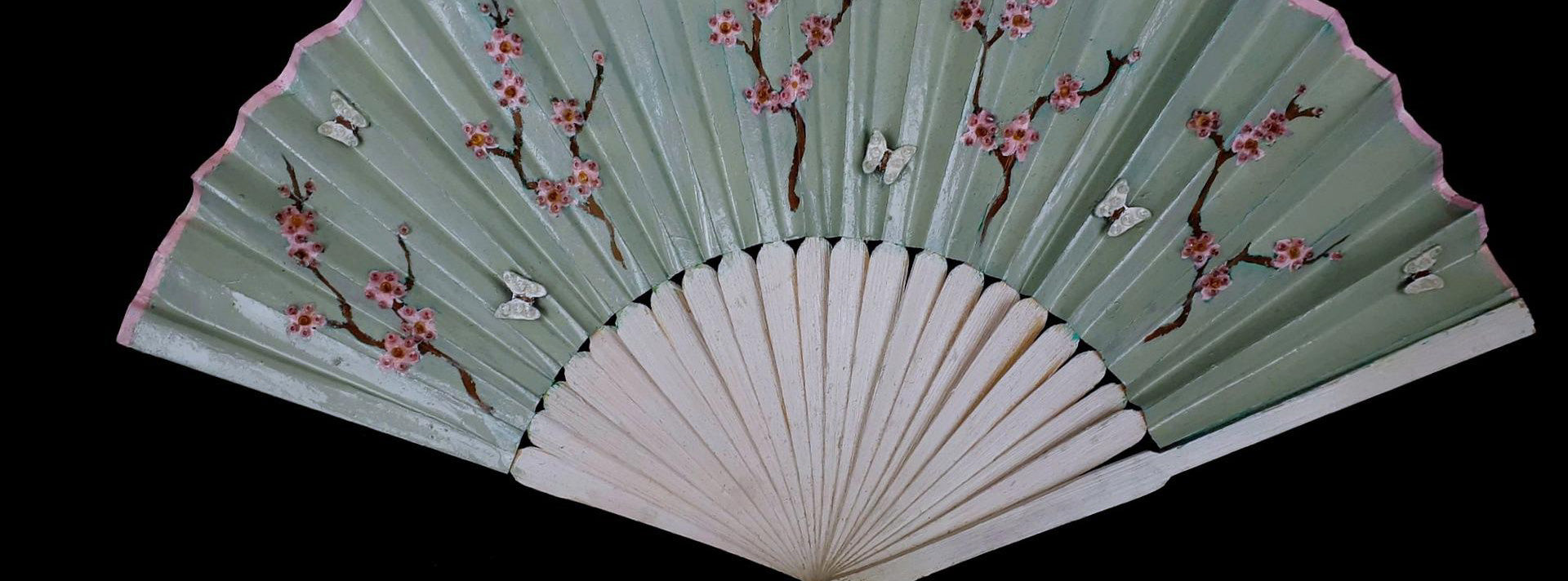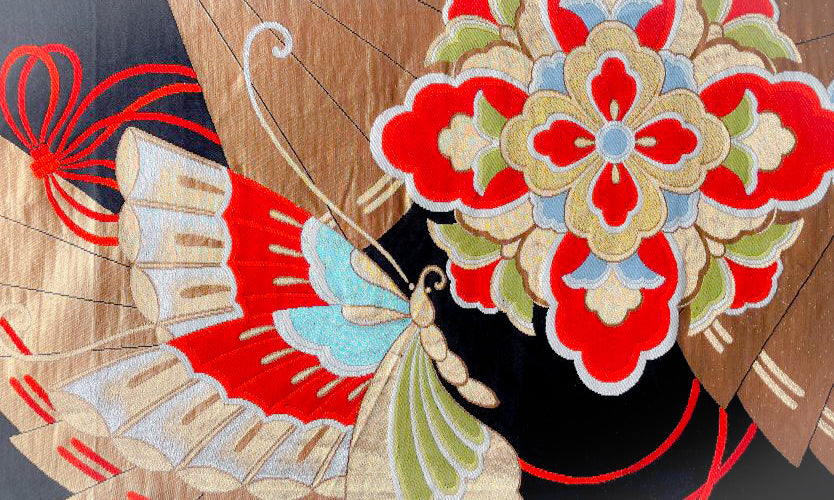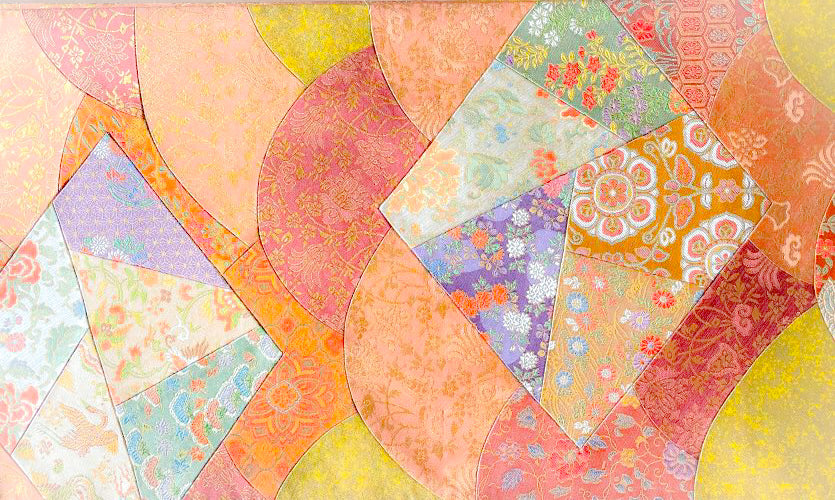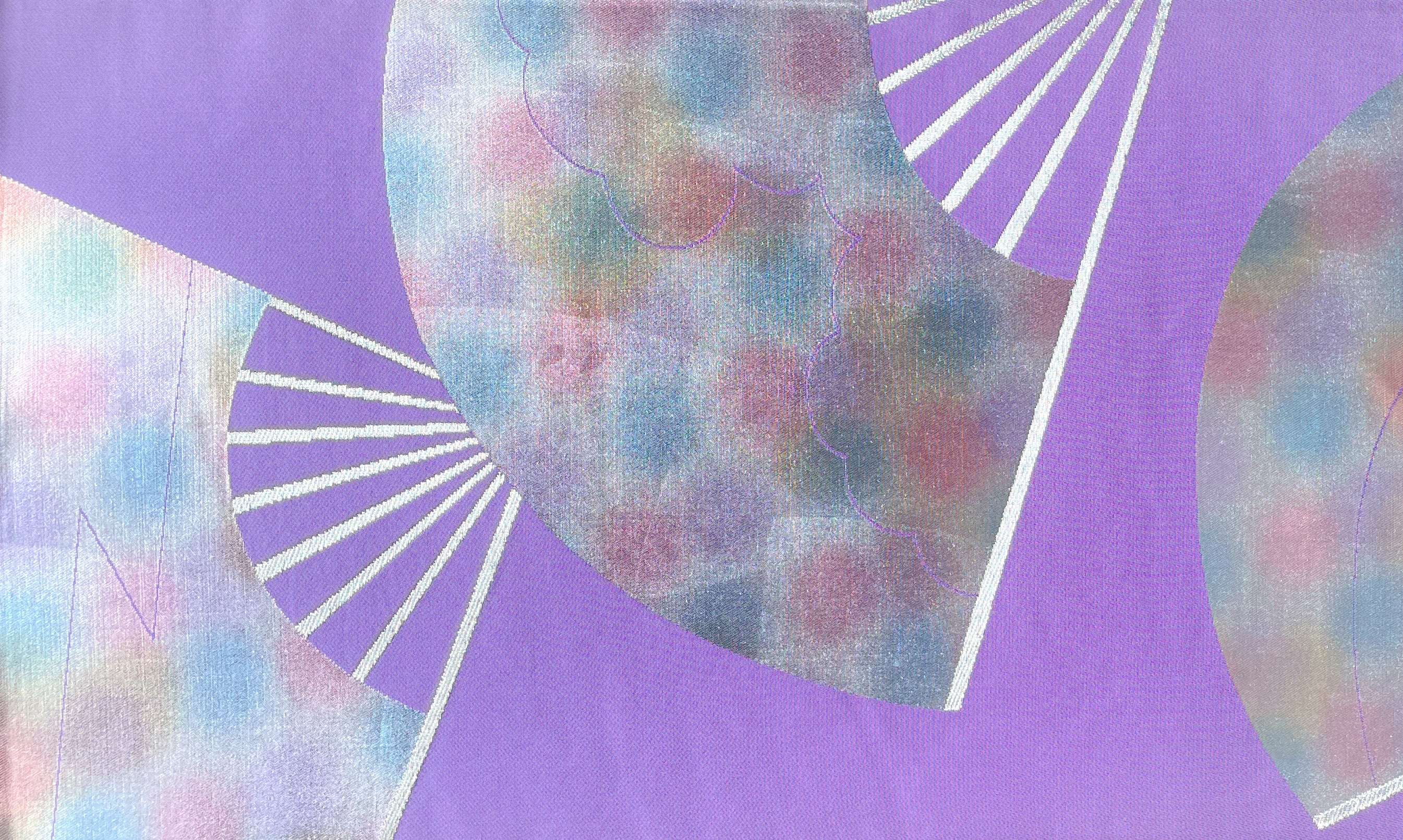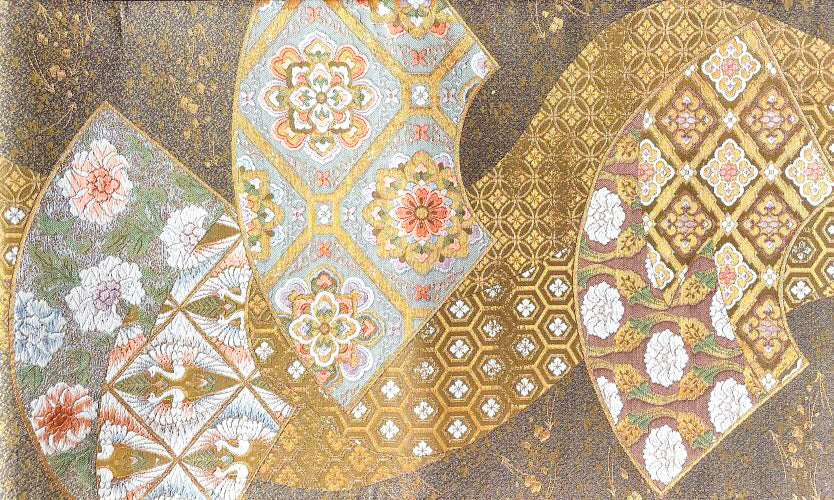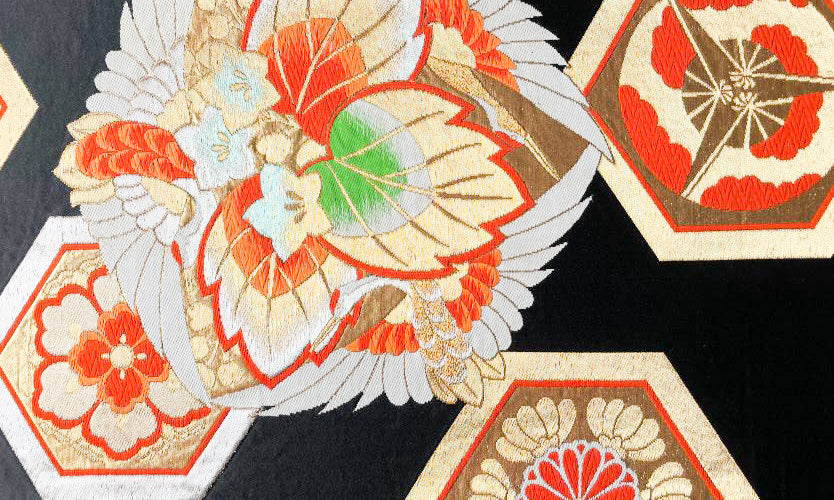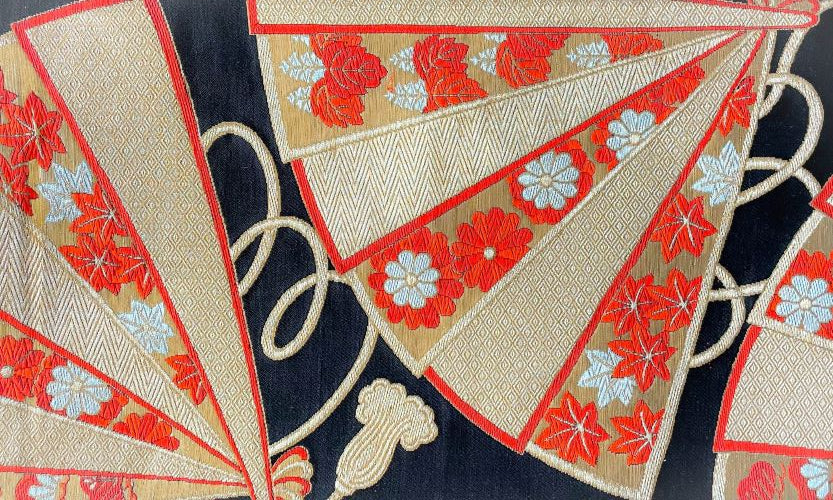扇 -Folding fan-
開くと末広がりになることから繁盛・開運の象徴とされてきた扇は、神霊を呼び起こす力を備えているとも考えられ、身近な生活用具でありながら、神楽や能楽、田楽などの芸能にも欠かせない存在として人々に扱われてきました。文様として描かれるようになったのは室町・桃山時代からで、開いたものだけでなく、閉じたものや半開きのものなど、さまざまな表現を見ることができます。
The fan, symbolizing prosperity and good fortune due to its spreading shape when opened, has been considered to possess the power to invoke divine spirits. Despite being a common household item, it has played an essential role in various traditional performing arts such as Kagura, Noh, and Dengaku. The depiction of fans as patterns began in the Muromachi and Momoyama periods, showcasing not only open fans but also closed or half-open ones, offering diverse representations.
扇面 -Folding fan surface-
広げた際、さまざまなモチーフを描くことができるのが、扇文様の楽しいところ。明確な呼び分けのルールがある訳ではないようですが、扇の中に季節の草花や動物、道具や生活用具など器物、幾何学文様などを配したものが「扇面文様」と呼ばれることが多いようです。
What makes fan patterns enjoyable is the ability to depict various motifs when opened. Although there aren't strict rules for categorization, designs featuring seasonal flowers, animals, tools, everyday objects, geometric patterns, etc., within the fan are often referred to as "Ōgi Men" or "扇面文様."
檜扇 -Wooden folding fan-
紙を貼った扇子の原型でもある木製の扇で、平安時代の男性貴族が装身具として使っていた檜扇がモチーフ。左右に長い紐飾りがついた雅な見た目から、礼装の振袖や訪問着、袋帯などに用いられることが多い文様です。
The motif of this pattern is the hinoki-uchiwa, a wooden fan that originated from the Heian period. This type of fan, used as an accessory by aristocratic men, features a graceful appearance with long decorative cords on both sides. It is often incorporated into formal attire such as furisode, houmongi, and fukuro obi.
地紙 -Folding fan paper-
地紙とは扇に貼る紙のこと。その美しい形から、扇の一部としてだけでなく、単体でも吉祥文様として能装束や小袖に古くから用いられてきました。草花や器物などのモチーフが描かれたものが一般的ですが、形状を活かしたデザインも多く見られます。
"Jigami" refers to the paper attached to a fan. Appreciating its beautiful shape, it has been used not only as a part of the fan but also as a auspicious pattern on Noh costumes and kosode. While it's common to find motifs of plants and tools, designs that take advantage of the shape are also prevalent.
この文様・和柄が用いられている帯地
Obi fabrics with this Japanese pattern from the obico selection

